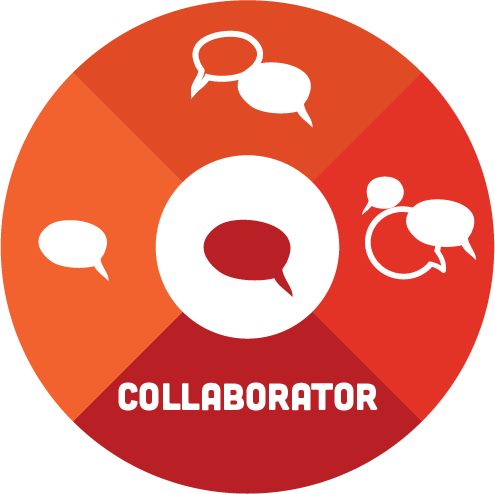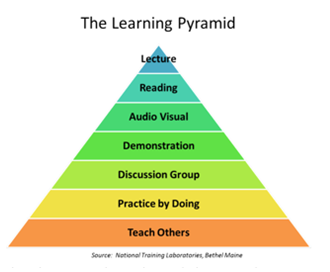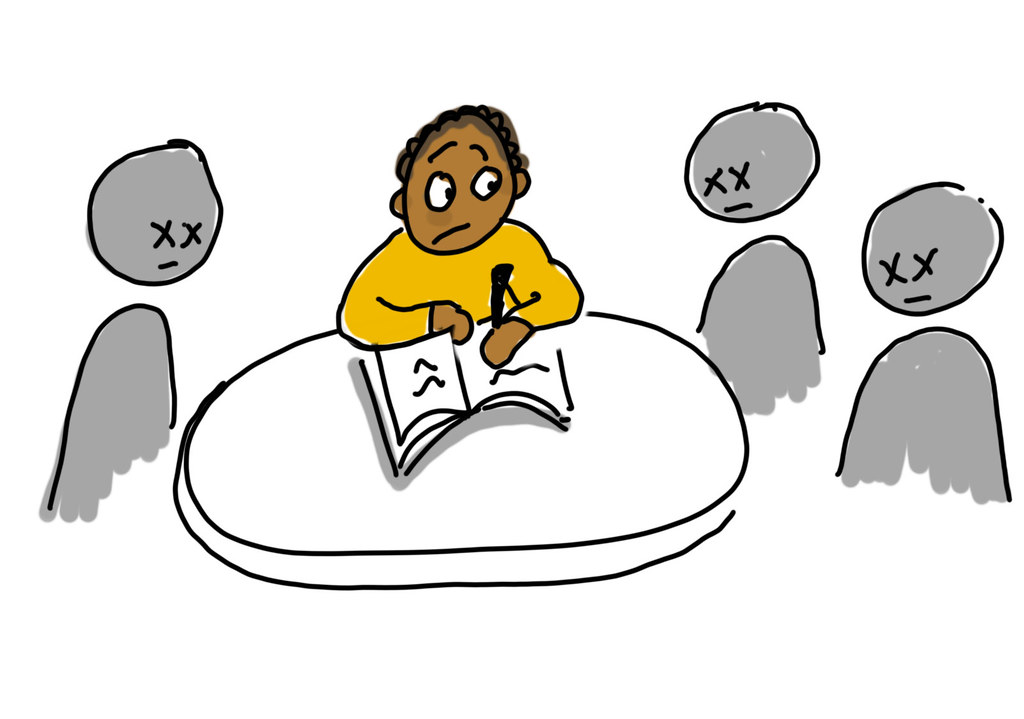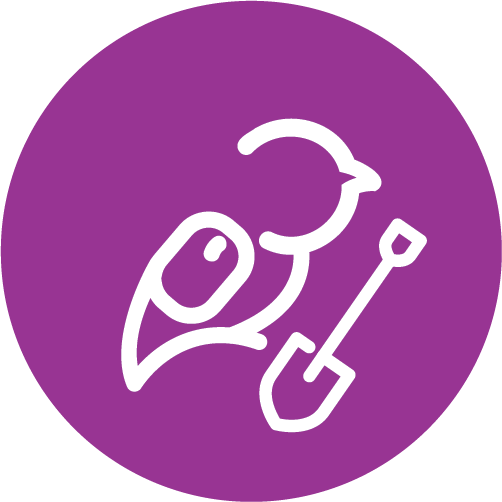

 In This Section
In This Section
We’ll have a look at the following topics:
- Managing Group Work (that is assigned to you)
- Finding Your Peeps (and forming a study group)
- Keeping Group Work on Track
And work towards meeting these outcomes:
- Creating constructive rules and expectations for your group and group members
- Finding and creating a study group that is right for you
Group work, amirite? Not everyone’s favorite thing ever, we know. It is, however, probably inevitable that you have to do some work in groups in your program. It’s also possible for it to be great. Well, maybe more like… not so bad. This section is here to guide you in preparing yourself to collaborate with the best of them. Maybe you’ll help nudge that group project experience from bad to better!
 A Wicked Problem: Managing Group Work
A Wicked Problem: Managing Group Work
Trent University student Sarah Rose’s story – We’re all in this together describes a number of tips that worked for her as she struggled to achieve an outcome similar to the high bar she had set for herself through her independent work (work she preferred and enjoyed). These tips center around communication and organization. We’ve summarized what Sarah learned here and included insights from successful learners that may help you manage future group work.
Communication is Key
- Reach out to your group members as soon as you can, the earlier the better.
- Determine early on what everyone’s main preferences are around communicating. Choose a method that everyone feels safe and comfortable using. Many social media options (e.g., Facebook Messenger, WhatsApp, Discord) collect personal data from you and your peers. You have to decide if you want to share your data before confirming a communication platform. Your institution may provide private spaces (such as student access to Teams or Zoom). Whatever you and your group choose, ensure you have everyone’s accurate contact information up front.
- Collectively communicate your availability for the next days/weeks working backwards from the project deadline date.
- Get to know the members in your group, their strengths and preferred ways of working. Try to recognize that everyone has an opinion and that individuals have different methods of working and learning. Consider building in an icebreaker activity to get everyone comfortable with knowing each other and sharing with one another.
- Ideally, start off with one face-to-face meeting. The remainder of your collaboration can be online/virtual, but the in-person meeting will help foster trust and familiarity with your group members.
During this kick-off group meeting, spend some time mapping out a group ‘charter.’ You don’t have to call it a charter – it can be group ground rules, group agreement, etc. Here’s a sample template that you can complete on your own when crafting this:
Your group charter will provide a pathway for the work ahead – including setting meeting dates/times, contact methods and preferred working styles. It can also help everyone get to know what their strengths, experiences and interests are, which can provide insights into everyone’s role and tasks. Whether or not your group has assigned a leader as part of your group charter or planning meetings, at one point or another, you will be asked to take a leadership role. Many of the tips contained in this module highlight what it takes to effectively lead within your groups.
Decide what Collaborative Tools your Group will use
Sarah talks about how her group projects benefit from the use of collaborative tools that facilitate the ability for all group members to be able to access and work on planning and development docs and files in real time. Both Microsoft and Google applications provide this ability (through Office 365 and Google Workspace) and can also help with version control in case of any hiccups along the way! They also can be used to build in a peer review loop – evaluating and providing feedback on project assets along the way. Find out at the outset what tools everyone is familiar and comfortable with using.
 Just Sayin’. If time is in abundance, maybe you could dabble in the Technologist Module (opens in a new window) to help your group enhance the fanciness of what is produced in the project. Just sayin’.
Just Sayin’. If time is in abundance, maybe you could dabble in the Technologist Module (opens in a new window) to help your group enhance the fanciness of what is produced in the project. Just sayin’.
Assign Roles and Tasks
Split the work to be done into different tasks that make use of individual strengths. Having roles both in the execution of your tasks and in meetings / discussions (e.g., Arani is responsible for summarizing discussions, Joseph for ensuring everybody has a say and accepts resolutions etc.) can help to make a happy, effective team. Distributing work between members can also make it less overwhelming and easier to complete because group members can work independently on their sections.
Here are some possible roles and their responsibilities that you might consider: [1]
Leader
Leads discussion with open-ended questions
– Encourages all group members
– Facilitates brainstorming by summarizing and clarifying group comments
– Helps guide conversation and focuses on positive statements
– Checks for consensus or questions from group members
Organizer
Schedules meetings
– Keeps the project on track
– Thinks about the ‘big picture’
– Ensures meetings follow a timeline/agenda
– Takes notes at meetings to send to everyone afterwards
Editor(s)
Edits completed work
– Compiles different pieces of reports/presentations from different group members to create ‘flow’ and consistency
Researcher(s)
Researches topics for the project
– Presents information to the group
– Provides the group members with sources and information
Writer(s)
Writes the project/report/presentation
– Responsible to follow guideline so that editor(s) have time to review and compile information
Trouble-Shooter/Brainstormer
Thinks about positive/negatives of ideas presented by the group
– Thinks about possible solutions to problems
– Critiques project based on assignment expectations/rubric to ensure success
Presenter(s)
Works with group members to compile and create presentation
– Presents information to class
Create a Timeline
Now that you have landed on how you will communicate, collaborate and who will do what, it’s time to map out your project plan timeline. It’s important to start at the project due date and work backward to make sure you have allowed enough time to not only complete each task/activity but also build in time for review and feedback. Sticking to a predetermined timeline ensures items are left until the dreaded last minute!
Have Clear Objectives
At each stage along the timeline, you should include agreed-upon goals or deliverables. These are markers of progress on the project as well as more immediate goals (e.g., to agree on an approach to the assignment by Friday). Each meeting or discussion should also begin with a goal in mind (e.g., to come up with a list of tasks that need to be done).
Leading Effective Group Meetings
Effective group meetings involve deliberate and planned effort. Following these steps will help you and your group to meet and work more effectively together.
- Set ground rules. Meetings can become disorderly and can discourage shyer group members from participating if you don’t have procedures in place for encouraging discussion, coming to a resolution without becoming repetitive, and resolving differences of opinion. Set rules at the outset as part of your group charter and revisit or modify them as necessary along the way. An interesting rule that one group made was that anybody who missed a meeting would buy the rest of the group a cup of coffee from the coffee shop. Nobody ever missed a meeting after that.
- Build consensus. People work together most effectively when they are working toward a goal that they have agreed to. Ensure that everyone has a say, even if you have to take time to get more withdrawn members to say something. Make sure you listen to everyone’s ideas and then try to come to an agreement that everyone shares and has contributed to.
- Clarify. When a decision is made, this must be clarified in such a way that everyone is absolutely clear on what has been agreed upon, including deadlines.
- Keep good notes and records. Assign a notetaker for each meeting and include a summary of discussions and decisions. Share them with all group members afterward so all are in the know and also to refer back to. This includes a clear indication of who has agreed to do what.
- Revisit your timeline to monitor progress and stick to deadlines. As a group, discuss progress in relation to your timetable and deadlines. Make sure that you personally meet deadlines to avoid letting your group down.
Whew, that was a lot of advice on how to participate in a collaborative group project. Likely you won’t (or won’t be able to) take all this advice or try all of these steps. Some more advice about all this advice is to choose the tips that you think will work best for your situation.
Finding Your Peeps
Now that we’ve discussed some strategies for dealing with group work that you have been assigned, let’s have a look at some reasons you might even *gasp* seek out groups yourself! We have some suggestions on how to go about finding groups of people that can support you for various needs like a study group, support group, or myriad other reasons.
 As suggested by UBC Science’s “The Distillation Blog“, it’s helpful to consider The Learning Pyramid to get a sense of just how deep (or shallow) some of our typical learning practices are. As you can see in the image to your right, as you go deeper into the pyramid (and learning gets better), things get more participatory. Working in a study group, according to the pyramid, is only behind actually doing the thing you are being taught and teaching it to others as an effective way to learn. Sounds pretty effective to be in a study group, huh? We’d even go as far as suggesting that just being in that study group could enhance your retention. When taking in a lecture, reading your text, or viewing course content videos you would likely pay closer attention when you have the expectation that you’ll be discussing this stuff with your study group pals later. Some of that good old accountability!
As suggested by UBC Science’s “The Distillation Blog“, it’s helpful to consider The Learning Pyramid to get a sense of just how deep (or shallow) some of our typical learning practices are. As you can see in the image to your right, as you go deeper into the pyramid (and learning gets better), things get more participatory. Working in a study group, according to the pyramid, is only behind actually doing the thing you are being taught and teaching it to others as an effective way to learn. Sounds pretty effective to be in a study group, huh? We’d even go as far as suggesting that just being in that study group could enhance your retention. When taking in a lecture, reading your text, or viewing course content videos you would likely pay closer attention when you have the expectation that you’ll be discussing this stuff with your study group pals later. Some of that good old accountability!
Is it possible that there are even more benefits to being in a study group? According to the Camden Learning Centre at Rutgers University, the answer is yes! They include:
- Filling gaps in your knowledge and reinforcing information
- Exposing you to different ways of thinking
- Supporting and motivating learning
- Developing problem-solving and critical-thinking skills
- Increasing confidence in group discussions
- Helping you learn how to work as part of a team
How to Create a Study Group
Want some advice for starting a study group? We’ve curated these tips for you from a few little places like Rutgers, Harvard and UBC (among others).
Find Other Students
There are numerous ways to identify students who are potentially interested in joining a study group:
- During class or office hours, ask other students if they’d be interested in joining a study group. If the lecture is over video chat, you can message students via chat during breaks or in smaller break-out rooms.
- Ask the professor to send out an email or announcement to the class to see if any students are interested.
- Start a discussion board thread using your school’s learning management system (e.g., Blackboard, D2L, Canvas, etc.) to connect with other students.
- Post on social media. Many post-secondary institutions have official Facebook groups for classes or specific programs where you can reach out to other students.
- Form a Study Group (Rutgers University)
- Study Groups (Harvard University)
Select Group Members
- An effective study group consists of 3-5 members, as more than 5 members may be counterproductive and difficult to manage.
- Before asking classmates to join your study group, look to see if they’re actively engaged during class, as these students tend to be the most reliable and diligent. If possible, see how compatible you are with a potential group member by discussing common goals (e.g., are they also trying to achieve a good grade?), commitment (e.g., do our schedules align? Are they able to commit to meeting regularly?), and abilities (e.g., are they able to stay focused and work effectively in group settings?).
- Guide to Effective Study Groups (Muhenberg College)
- How to Study in a Group: Finding the Right Classmates (Study.com)
Create a Group Chat
- As someone forming the study group, you’ll need to connect all the group members. The easiest way for everyone to keep in touch is by creating a group chat using Facebook, Instagram, WhatsApp, iMessage, SMS, Discord, Snapchat, Microsoft Teams or any other newfangled tool the kids are using these days.
- How to Start a Study Group (Herzing University)
Determine Logistics
- All group members should discuss their preferred meetup times (e.g., Thursday 2-3 PM) and frequency (e.g., once or twice a week) so that meetups can be scheduled in advance. Ideally, try to keep the meetup times consistent, so you don’t have to worry about scheduling every week.
- Figure out the location of meetups. The group study sessions should take place in a quiet, tidy, distraction-free area that is large enough to study comfortably. Common areas to study include common rooms across campus, empty classrooms (check availability), the student learning center, or the library (reserve a specific room if possible). If the study group is meeting virtually, you’ll need to agree on a video chat platform, such as Zoom, Google Hangouts, or Skype.
- Tips for Starting a Successful Study Group (University of British Columbia)
- How to Start a Study Group (Herzing University)
Plan Before Every Meeting
- Before every meeting, the group needs to establish everyone’s role, the agenda for the study session (outlines the structure of the session) and determine what needs to be prepared.
- In terms of roles, the group needs at least a facilitator/leader to keep meetings on track and another person to organize the meetings (i.e., schedule and plan future meetings). These roles can rotate every week or remain constant depending on what the group decides.
- The structure/format of your group study session is dependent on your group’s needs. Whether you compare notes, discuss readings, work on assigned problems, or complete other tasks is up to your group.
-
Sample Agenda Introduce topic to be covered Review and compare class notes Discuss readings and concepts Ask questions Work on assigned problem Plan for next meeting - Discuss how everyone should prepare for the meeting. This could include completing the weekly readings or a set of questions. If multiple topics are being covered, you can potentially divide the readings or topics among the group, and each member can present it to the group at the next meeting.
- Guide to Effective Study Groups (Muhlenberg College)
- 5 Tips for an Effective Study Group (The University of Utah)
Collaboratively Develop Group Goals and Expectations
- During the first group meeting, discuss your goals as a group (i.e., what does the group want to achieve?) and come to an agreement on group expectations or rules regarding punctuality, absenteeism, staying on task, being respectful of other people’s ideas, conflict resolution, coming prepared and other expectations important to the group.
- Also, determine actions to be taken if people don’t meet expectations (e.g., removing members who consistently skip meetings, etc.)
- Tips for Starting a Successful Study Group (University of British Columbia)
Evaluation
- Continually evaluate the effectiveness of your study group by comparing expectations, goals, and plans to actual outcomes. Identify areas where you can improve as a group and find ways to address problem areas. If you or others find that the group members aren’t compatible or productive, then it’s okay to tell them that it isn’t working out in a respectful manner.
- How To Create an Effective Study Group (College Raptor)
And some more tips!
- Come prepared! Ensure you are familiar with the material so that you can identify gaps in your knowledge or areas you’re struggling with. It will also ensure a more productive group study session (i.e., you won’t need to waste time reviewing the material on your own).
- Support and encourage each other, especially when members may not be at their best due to life circumstances.
- Listen carefully and avoid talking over other people.
- Allow everyone to participate. Nobody should dominate the study session. Try using a timer or taking turns doing different roles to prevent this.
- Recognize that working collaboratively can pose challenges at times but work together to make it a positive experience for everyone.
- Study Groups (How-to-study.com)
Keeping Group Work on Track
Projects are made up of tasks. Lots of them, and in an ideal world, assigning these tasks to groups of individuals rather than one person is meant to ease the completion process while maintaining or even increasing the quality of the completed work. However, even the most carefully planned projects can get easily off track.
 A scenario that may be all too familiar to most of us here is when you’ve gone through all the trouble of dividing up the tasks, assigning roles, setting up deadlines, and all the jazz that led you to believe that your group is in good standing with a semi-clear picture of the work ahead and what each member must do for a successful collaboration. However, time marches on, and one (or more!) of your teammates (GASP!), or maybe you (even bigger GASP!) have missed deadlines, and the project has officially gone off track. But time waits for no one, and the closer you get to the final project deadline, the more stressed you and your members get! Unproductivity from one or more members of the group often leads to the others having to work overtime to meet the deadline.
A scenario that may be all too familiar to most of us here is when you’ve gone through all the trouble of dividing up the tasks, assigning roles, setting up deadlines, and all the jazz that led you to believe that your group is in good standing with a semi-clear picture of the work ahead and what each member must do for a successful collaboration. However, time marches on, and one (or more!) of your teammates (GASP!), or maybe you (even bigger GASP!) have missed deadlines, and the project has officially gone off track. But time waits for no one, and the closer you get to the final project deadline, the more stressed you and your members get! Unproductivity from one or more members of the group often leads to the others having to work overtime to meet the deadline.
However, it is important to recognize that unproductivity can be highly contagious. Being thrown off course can be highly demotivating and demoralizing. The unproductivity bug, when caught by one member, can spread to others, turning them into idle zombies that don’t know how to meet project deadlines. I think we can all agree that being the one survivor doing all the tasks while dealing with lazy zombies feeding off your brain in a group project gone horribly wrong is just no fun.
But don’t panic just yet! In this section, we will tell you everything you need to know about task management and the steps you can take to keep yourself and your team on track. So, without further ado, let’s dig into this little survival kit.
First impressions are everything! This may be cliché, but that doesn’t mean it isn’t true. First impressions are so important because they have a lasting effect. The very first time that you meet with your teammates, you can quickly judge their trustworthiness and level of dedication to the project. Your initial character judgment will influence how you behave towards your group members and will also play a crucial role when it comes to the tasks of assigning roles. Therefore, it is important that you yourself exhibit the right attitude and behavior. So, make sure that your initial attitude is an excited, dedicated, and open one.
Group work can quickly turn sour if even just one member (Swain, 2021):
- Becomes overly aggressive
- Displays unhappiness with any decisions made
- Disrespects others
- Rudely criticizes other’s ideas without suggestive comments
- Distracts during group meetings
- Fails to contribute
- Listens too little and/or frequently interrupts others
- Dominates the discussion by talking too much
Having said that, it’s important to realize that disagreements are inevitable, especially in collaborative work with an impending deadline (Swain, 2021) [2]. So, when they do occur, it’s best to not make things personal (Swain, 2021). Try to ensure that the disagreement and the discussion surrounding it remain professional, constructive, and focused on the task in hand (Swain, 2021). For example, if you have an issue with the level of productivity, contribution, or commitment of a certain member, first try and speak to them privately. First check to make sure that there isn’t anything else going on with them that they may require your support with. In an argument, it’s helpful to put yourself in other people’s shoes, and think of how you would like to be treated.
It’s all about the right mindset. Your mindset is the collection of attitudes that influence the way you see, interpret, and behave in a situation (Brown, 2016). When assigning roles in a group setting, if you choose to exclude a member or two from a specific task because you think they just won’t get it, that’s your mindset hard at work (Brown, 2016) [3]. Your mindset is manifested through your behavior, so if you undertook someone’s mindset, then you’d understand the logic or reasoning behind their actions (Brown, 2016). It’s worthwhile to spend a minute or two here reflecting on different mindsets, because they can help you decipher the logic behind some notoriously self-defeating behaviors that your teammates may have exhibited in the past.
- Growth versus Fixed Mindset
People with a fixed mindset do not think that others, including themselves, can change their talents, abilities, and intelligence (Gottfredson & Reina, 2020) [4]. When faced with a challenging task, those with a fixed mindset would choose not to do it, because they are afraid of failure that may call into question their intelligence and capabilities. Those with a fixed mindset deflect tasks rather than risk shattering their confidence and view of themselves.
-
- “When a team member waits until too late to ask for help, I understand that they see that request as a failure. With a fixed mindset, asking for help is tantamount to admitting they can’t do an assigned task.” (Brown, 2016)
- “A team member preoccupied with the tone of direct feedback, and not its content, shows they’re reluctant to reflect on their own work. With a fixed mindset, the urge to deflect any criticism is strong.” (Brown, 2016)
In contrast, those with a growth mindset view challenges and failure as a learning opportunity. Those with a growth mindset take advantage of feedback and adopt the most effective problem-solving strategies (Gottfredson & Reina, 2020). They are very effortful and persistent in seeking to accomplish goals, contrasting the deflective nature of those with a fixed mindset (Gottfredson & Reina, 2020). However, the mindset that you adopt, be it a fixed or growth one, can depend on the task or type of challenge. You may be very eager and open minded when it comes to the challenge of trying a new recipe, while resisting other challenges, such as practicing the piano (Brown, 2016).
- Assertive versus Passive Mindset
Teamwork depends on every participant having the equal opportunity to share their opinion and offer critique (Brown, 2016). The ability to express one’s thoughts hinges heavily on one’s ability to remain confident while fellow group mates subject your work to judgement and criticism. Those with an assertive mindset have the natural tendency to overcome the thought that their opinions or questions aren’t up to par with everyone else’s (Brown, 2016). Whereas those with a passive mindset tend to lose their voice quickly and overthink. It is important for those with an assertive mindset, usually the members dominating discussion, to recognize the passive members. It is important to ask your members for their opinion every step of the project because your members may have highly valuable thoughts or questions that they are otherwise too shy to contribute to the discussion. Moreover, knowing how to deliver constructive feedback as to not shatter the confidence and morale of other members is key for those with an assertive mindset. In addition, one trick for the passive mindsets is to simply admit that they don’t know. Don’t be afraid to admit when you are confused or don’t know the answer. Never wait until it is too late, and don’t be afraid to ask for more time to research, analyze, or work on a task.
Great collaboration depends on every participant having a voice, and the freedom to express their opinions and offer critique.
The important point to take away from this discussion is that your mindset plays a critical role in working with others. It impacts the way you approach or tackle challenges. It can also cause you to react counter-productively to conflict situations (Brown, 2016). By understanding different mindsets, you can decipher complex situations more clearly, and tailor your behavior towards your teammates to help ensure the best possible output for group success.
 Wrap Up
Wrap Up
This section of the Liberated Learner program was designed to get you ready to collaborate by giving you tips on how to participate in group projects, and how to find and set up a study group. Next, we will take a step back a little, into yourself, and examine just how you might become your own best advocate in collaborative situations.
 Dig Deeper
Dig Deeper
Here are some resources to help you dig a little deeper into some of these topics.
- SPARC Guide Supporting Partnerships to Advance Results of Collaboration
- 3 tips for successful group work
- Tips for Effective Group Working
- Guide to Group Work
- Creating and Facilitating Peer Support Groups
 Activity: Creating a Study Group
Activity: Creating a Study Group
Purpose of Activity:
The purpose of this activity is to apply what you learned in the ‘getting ready to collaborate’ section, conduct independent research, and reflect on your needs in order to create or join a group that would benefit you.
Level 1: Research and Reflect
Task: In this task, you will familiarize yourself with different types of groups and identify a group that would benefit you.
Time commitment: This activity will take between 10 to 30 minutes to complete.
Steps to complete Level 1
- Review the list of support groups here and do your own research on different types of groups that exist in your area or post-secondary institution. Examples of groups to search for are peer support groups, group therapy, study groups, and student-run clubs and groups at your post-secondary institution.
- On a piece of paper, jot down one or more problems you are facing that could be addressed by one of the groups. For example, feelings of isolation on the basis of race or ethnicity could be addressed by joining a racial/ethnic student organization (e.g., Black Students Association, Chinese Students Association, etc.).
- Write down how the group would benefit you. For example, a racial/ethnic student organization could help one feel less isolated by connecting them with others who share a similar identity and lived experience.
Note: Spend some time reflecting on problems you’re facing in life. It may not be evident at first. Some problems may seem less significant than others, but nonetheless, they’re still valid problems. Problems can range from mental health issues or discrimination to lacking involvement in extra-curricular or social activities. There is likely a multitude of groups that exist to address your various needs. However, if the group you’re looking for doesn’t exist in your area, then maybe you can create a new group (continue to level 2 and 3 if you want to learn more)!
Success Checklist
- You are aware of the various groups that exist on and off campus.
- You have identified a problem that could be addressed by joining a group.
- You understand how the group is able to help you.
Level 2: Plan
Task: In this task, you will brainstorm rules and regulations required for the group you’ve identified to function effectively.
Time commitment: This activity will take between 10 to 30 minutes to complete.
Steps to Complete Level 2
- On a piece of paper, write down at least 5 rules and regulations you’d expect from the group you identified in Level 1. Rules and regulations can include punctuality, absenteeism, staying on task, being respectful, conflict resolution, coming prepared and other expectations that may be important to your specific type of group.
- Reflect on what course of action you would take if the rules and regulations weren’t being followed by other members.
Success Checklist
- You have come up with 5 or more rules and regulations you’d expect from the group you identified in Level 1.
- You have determined what course of action you would take if the rules and regulations were broken.
Level 3: Act
Task: In this task, you will either start to create or join the group you identified.
Time commitment: This activity will take 10 to 60 minutes to complete.
Steps to Complete Level 3:
- If you are joining a group, reach out to the group via the indicated method of communication (e.g., email, etc.) to say you are interested in joining the group and why, as well as ask how you would go about joining or any other questions you may have.
- If you are creating your own group, post an advertisement about it online via social media (e.g., Facebook). The ad should include the name of the group, the objective, goals, contact information, meet-up times, locations (e.g., park, café, library), or online platform (e.g., Zoom). You should consider registering your group with your post-secondary institution (check your institution’s website), as they may help reimburse some of the costs associated with your group.
Success Checklist:
- If you are joining a group, you have emailed the group about your interest in joining.
- If you are creating a group, you will have created an advertisement and posted about it online to see who’s interested in joining.
 Dig Deeper
Dig Deeper
Refer to the following resources for further information about creating different types of groups.
*Note: check out your post-secondary institution’s website to find information about creating student-led clubs and groups (varies between institutions).
 An Example
An Example
See an example response here. (opens in new browser window)
What do I do with this?
If you are playing along using the Liberated Learner Work Binder, upload your “Creating a Study Group” file to the Collaborator Module folder.
If you’re doing the activities to gather more learning and support your group as a leader, save your work any way you wish.
- https://uwaterloo.ca/student-success/sites/ca.student-success/files/uploads/files/TipSheet_GroupWork_0.pdf ↵
- Swain, Rachel. “3 Tips for Successful Group Work.” Prospects.ac.uk, Dec. 2021, https://www.prospects.ac.uk/applying-for-university/university-life/3-tips-for-successful-group-work ↵
- Brown, Dan. “Collaboration & Creativity: Getting into the Right Mindset.” Medium, EightShapes, 30 June 2016, https://medium.com/eightshapes-llc/collaboration-creativity-getting-into-the-right-mindset-b9d5d6eaf9f6 ↵
- Gottfredson, Ryan, and Chris Reina. “To Be a Great Leader, You Need the Right Mindset.” Harvard Business Review, 13 Sept. 2021, https://hbr.org/2020/01/to-be-a-great-leader-you-need-the-right-mindset ↵

